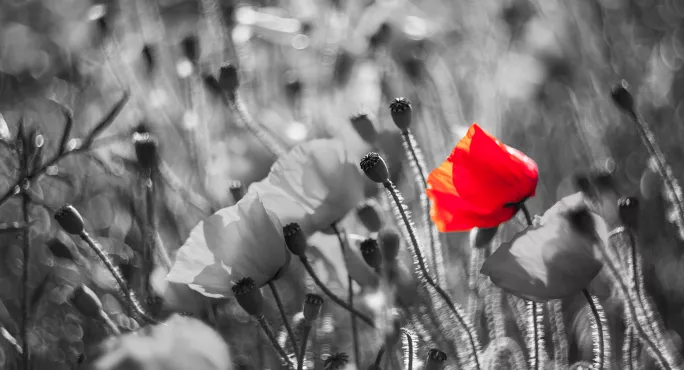- Home
- Teaching & Learning
- General
- Schools can play a ‘pivotal role’ in remembrance
Schools can play a ‘pivotal role’ in remembrance

The centenary of the outbreak of the Second World War is 15 years away. It will be a time to consider the sacrifices of those who served and of the countless civilians who became caught in the turmoil of a global conflict so violently and abruptly thrust upon them. It will be a time to reflect and acknowledge the lessons learned and those still being learned - a time to decide if the memories of what happened should remain vivid in our collective conscience.
I am sure, as we get closer to this centenary, many teachers will talk of remembrance with the young people in their classrooms, of the perpetuity of memory, perhaps even the insistence that as citizens they should never forget. But what if sometimes, innocently and without malice, we do it wrong?
I wonder if remembrance in our society has become some type of stick that we swing on key dates and at significant milestones, in an attempt to ensure that everyone remembers. If so, is that the right thing to do? Instead, should we not regard remembrance as something that permeates through almost every aspect of our daily lives - whether at school, at work, in our villages, towns, cities, places of worship or homes?
History helps us understand the world today
After all, it is arguably only through a shared understanding of the people who came before us, the places they inhabited and the events that shaped their lives that we can gain a more informed perspective of the world that we live in today.
- History lessons: Five key points when teaching “difficult” history
- Srebrenica Memorial Day: Where on earth to start when teaching about genocide?
- News: Decision on the future of Scottish exams delayed until new school year
Remembrance, despite its name, is not simply the act of remembering; it is a nuanced process that intertwines personal, cultural and historical dimensions. In the present day, we have limited living memory of the Second World War and therefore only a window into the past. In historical terms, most of us did not experience what it was that happened; we were not there, so how can we ever, by definition, truly remember?
We only need to look to the recent D-Day 80th-anniversary commemorations to be reminded of the passing of time and the fragility of life, given that it was almost certainly the last significant gathering of Second World War veterans in their lifetime. It was a reminder of the need to build a rich tapestry of memory - one that informs, educates and inspires.
Engaging with the past
But schools, if they want to, can play a pivotal role in nurturing an environment where memory thrives; they can be places conducive to a form of remembrance that is organic and not forced. By encouraging critical thinking, fostering empathy and promoting dialogue, young people can be empowered to engage with history authentically in a manner that is comfortable and of their own choosing.
Through methods that history teachers are incredibly adept with, young people can engage with aspects of memory and lived experience via primary source material such as testimonies, diaries and archival footage; all are capable of humanising the past, perhaps helping to make a connection between ourselves in the present and individuals from the past.
Commemorations, anniversaries and milestone years will come and go. However, everyday acts of remembrance can happen at any moment, on any school day and in any classroom.
Whether it be atrocity or triumph, pride or shame, sadness or elation - and whether through literature, art, song, dance or conversation - teachers and young people have it in their power to sustain collective memories of the past.
Dr Paul Hamilton is a teaching fellow (history education) and academic coordinator (placements and partnerships) at the University of Edinburgh’s School of Education and Sport. He was previously a teacher of history and legal studies at Clydebank High School and tweets @_PaulHamilton
For the latest Scottish education news, analysis and features delivered directly to your inbox, sign up to Tes magazine’s The Week in Scotland newsletter
You need a Tes subscription to read this article
Subscribe now to read this article and get other subscriber-only content:
- Unlimited access to all Tes magazine content
- Exclusive subscriber-only stories
- Award-winning email newsletters
Already a subscriber? Log in
You need a subscription to read this article
Subscribe now to read this article and get other subscriber-only content, including:
- Unlimited access to all Tes magazine content
- Exclusive subscriber-only stories
- Award-winning email newsletters
topics in this article



